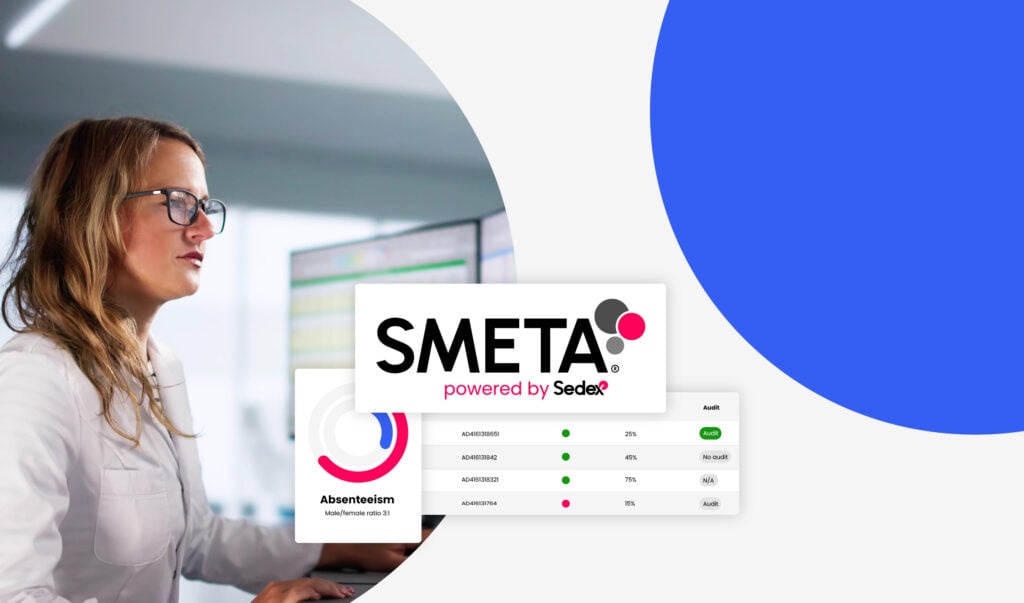How to Demonstrate Your Company’s Commitment to SDG 5: Gender Equality
Supply chain data can provide powerful evidence of your company driving gender equality. This includes information on women in leadership roles, gender pay gaps and differences in men and women’s working situations.
Many businesses want to demonstrate their commitment to social and environmental sustainability through supporting the United Nations’ 17 Sustainable Development Goals (SDGs). But showing progress against these global Goals can be tricky.
Each SDG has several smaller Targets, to break down the wider Goal into more specific activities. For SDG 5 – Gender Equality – there are nine Targets.
Companies can use gender data (data separated by male and female) from their operations and supply chain to demonstrate commitment, effort and improvement against many of these.
This insight came from a Sedex Community event on gender equality. Learn more about our Community here.
The power of data to drive gender equality
The right data, separated by gender, enables your business to identify and address issues affecting women.
- Set and measure progress against gender diversity and equality goals.
- Identify the roles women play, and understand the differences between male and female workers’ experiences.
- Analyse root causes of workplace issues, whether these have a greater impact on women and whether they are influenced by gender discrimination.
- Make informed decisions to actively manage issues, and understand whether actions taken are having a positive impact.
Many companies also increasingly recognise the importance of gender equality as an enabler of wider business benefits, such as attracting and retaining high-performing, experienced female staff.
The first step is gathering gender data across your own operations and supply chain. Sedex’s Self-Assessment Questionnaire captures key sustainability-related information from worksites. Our Gender Data Report dashboard brings relevant metrics together to show the gender composition of your supply chain.
Click a target to learn what data helps your business show how they progress gender equality in the supply chain.
Target 5:1: Ending discrimination against women and girls
“End all forms of discrimination against all women and girls everywhere”
Businesses can make a significant contribution to this Target through addressing gender-based discrimination and harassment in the workplace.
- Risk data. Identify the highest-risk countries and industries in your supply chain for gender discrimination using a risk assessment tool. Show how your business focuses resources and action where they’re most needed.
- Grievance data. Analyse grievance data by male and female workers to identify and investigate concerns that are affecting women more, and take action to address these.
- Pay data. Use data on pay rates to highlight gender gaps and show progress made in closing these.
- Data on contract types. Use this data to understand the number of women with less secure employment, such as those on temporary or zero-hours contracts. Track this data over time to highlight progress made in providing more secure work.
Target 5.4: Recognising unpaid care and domestic work
“Recognise and value unpaid care and domestic work through provision of public services, infrastructure and social protection policies and the promotion of shared responsibility within the household”
Women continue to perform more unpaid care and domestic work than men[i], which can affect their ability to keep a job or build a career.
Companies contribute to this Target through supporting women to stay in work and encouraging an equal share of care responsibilities.
- Worker turnover and absenteeism data. Use gender data on leavers and absenteeism to identify gaps and investigate them in more detail. Demonstrate progress by showing a reduced gap between male and female absenteeism or turnover rates.
- Data on benefits and policies. Policies such as flexible working, remote working and sufficient, gender-neutral parental leave help people to balance caregiving responsibilities and encourage women and men to share these more equally[ii]. Use data to show these policies in place, and uptake among employees, at your own and suppliers’ work sites.
Target 5.5: Ensuring women’s equal opportunities and participation in leadership
“Ensure women’s full and effective participation and equal opportunities for leadership at all levels of decision-making in political, economic and public life”
Companies can demonstrate their contribution to this Target by showing how they support women’s professional development and access to management roles.
- Management and worker committee data. Women are typically underrepresented in decision-making roles. Use data on the gender splits in leadership roles and worker committee representation to identify significant gaps, prioritise where to take action and show progress over time.
- Promotions data. Use this data to understand differences between men and women in promotions received, and show progress in reducing significant gaps.
- Data on training. Demonstrate that your company provides and supports leadership training and development opportunities for women, including across your supply chain.
Target 5.6: Ensuring access to sexual health and reproductive rights
“Ensure universal access to sexual and reproductive health and reproductive rights”
Your company helps progress towards this Target by facilitating women’s access to adequate healthcare.
Use data on benefits and policies to show the healthcare you and your suppliers provide to workers — for example, the number of women covered by medical benefits. Consider where your company can help suppliers to develop and implement programmes for women’s physical and mental health, and track usage and uptake among workers.
How Sedex can help
Our data-led tools and services enable your company to capture and store gender-disaggregated data from suppliers around the world. This data is essential for analysing and reporting on women’s working situations across your supply chain.
Get in touch to learn more about our supply chain sustainability data Platform, site-level data-gathering and assessment tools and our Gender Data Report dashboard.
[1] Source: British Medical Journal, 2021
[2] See Diversity for Social Impact, 2023



